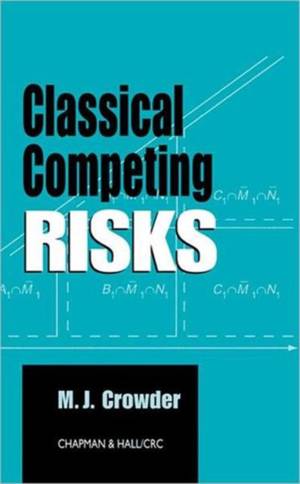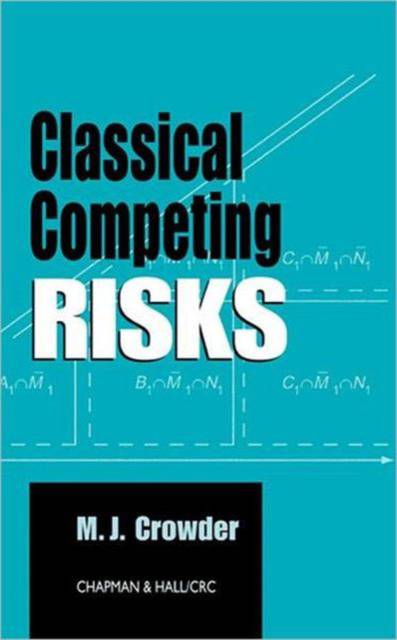
- Retrait gratuit dans votre magasin Club
- 7.000.000 titres dans notre catalogue
- Payer en toute sécurité
- Toujours un magasin près de chez vous
- Retrait gratuit dans votre magasin Club
- 7.000.0000 titres dans notre catalogue
- Payer en toute sécurité
- Toujours un magasin près de chez vous
Description
If something can fail, it can often fail in one of several ways and sometimes in more than one way at a time. There is always some cause of failure, and almost always, more than one possible cause. In one sense, then, survival analysis is a lost cause. The methods of Competing Risks have often been neglected in the survival analysis literature. Written by a leading statistician, Classical Competing Risks thoroughly examines the probability framework and statistical analysis of data of Competing Risks. The author explores both the theory of the subject and the practicalities of fitting the models to data. In a coherent, self-contained, and sequential account, the treatment moves from the bare bones of the Competing Risks setup and the associated likelihood functions through survival analysis using hazard functions. It examines discrete failure times and the difficulties of identifiability, and concludes with an introduction to the counting-process approach and the associated martingale theory. With a dearth of modern treatments on the subject and the importance of its methods, this book fills a long-standing gap in the literature with a carefully organized exposition, real data sets, numerous examples, and clear, readable prose. If you work with lifetime data, Classical Competing Risks presents a modern, comprehensive overview of the methodology and theory you need.
Spécifications
Parties prenantes
- Auteur(s) :
- Editeur:
Contenu
- Nombre de pages :
- 200
- Langue:
- Anglais
Caractéristiques
- EAN:
- 9781584881759
- Date de parution :
- 11-05-01
- Format:
- Livre relié
- Format numérique:
- Genaaid
- Dimensions :
- 165 mm x 237 mm
- Poids :
- 408 g

Les avis
Nous publions uniquement les avis qui respectent les conditions requises. Consultez nos conditions pour les avis.






